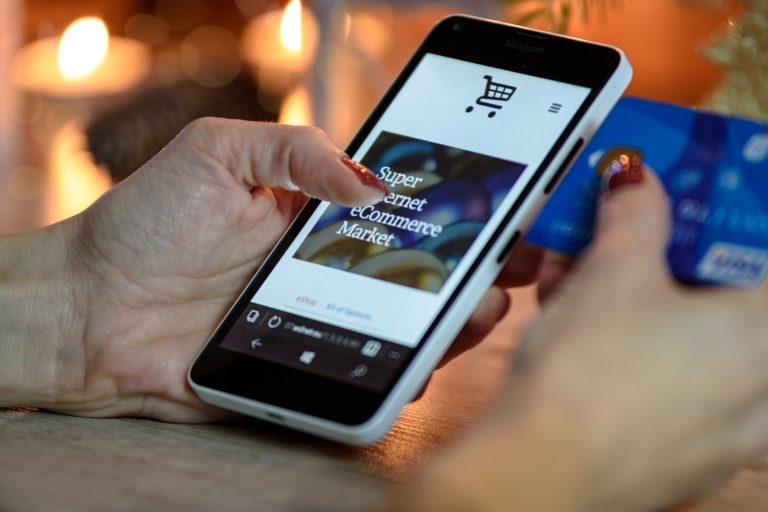Making a modern and professional website is the goal of any designer and it should also be the trait of every business approaching the web. We are a web agency, so we make website design in Birmingham everyday, and we know nowadays it is very easy to create your own websites in less than one day, thanks to the many tools available online like Wix, Shopify, and other drag & drop composers. It is a cheap solution that many local businesses adopt when they can only dedicate a tight budget to online communication. We often say the potential the web can offer is underestimated and if you allocate a low budget, well, you should raise it. However, although it is the ideal course of action to take, it is not always materially possible to do so.
However, these cheap website design platforms can do more harm than good, if used improperly and without any skills or knowledge of how the web works. Let me be clear: it’s not that it is your fault if you want to save money, especially if you are a small local business, we know a website design in Birmingham can be quite expensive, what we say is that if you want to make your own website, you should at least make it look professional.
At this point, a new question arises: what makes a website professional? We identified ten elements that make the difference. Let’s see all of them.

1. Define your goal
Before even putting the figurative pen to paper, you need to plan your website design according to the goals you want to achieve. Make sure your goals are S.M.A.R.T. and measure your ROI based on those goals: increase in online sales? Brand awareness? Whatever is your intent, make sure your website reflects it.
2. Define your target
Your business is not for everyone. Unless you are a nationwide supermarket chain like Tesco or Sainsbury’s, and even in that case, there may be some people who are not interested in your offer. However, it is exactly for this reason that you have to pick your target carefully, because it will help you optimise not only marketing and advertising expenses, but also the UX design.
I’ll give you an example: we want to attract customers who are looking for their website design in Birmingham, therefore, we have to study their characteristics: we know most of them are older than 25, and if they own a local business they struggle with fixed costs and taxes, so they are looking for a simple but cheap solution. This consideration is suggesting me to create a website with a simple plain layout, easy to understand, and a copy that highlights how much money they could save.
3. Optimise it for mobile
Responsiveness is very important: nowadays, we all surf on the internet using our smartphones, so many people prefer doing things on their mobile devices, rather than their desktop computers.
Obviously, the screen of a computer and the display of a smartphone have a different resolution, and the way you view the elements on page changes radically, so make sure the website design you are making is correctly viewed both on mobile and desktop.
4. Insert your logo
Have you got a company logo? Show it proudly on your website! Create an identity, make yourself recognisable both online and offline, so that when people see your logo online they recall it to the place in the city they recently visited or to the business card you gave them, and when people see your logo offline it reminds them of that stunning website they found on Google.
5. Choose your colours
What are the main colours of your logo? Take note of them, because you should be coherent with your choice in every part of the website. This is the most important element that will give your website a professional look, so avoid the rainbow effect. Unless your website is about LGBTQ+. Also, in doing this, keep into account the marketing colour psychology and the effects colours have on people, and relate this choice to your target.

6. Do not forget the trends
I know what you are thinking: how can I respect my colours choice and my style if I also have to follow the trends of the moment.
You can, because the trends don’t necessarily involve colours. What I mean for trends is something else: can you remember all those flash scripts on the websites in the ’90s? Well, in 2018 they are outdated. And ridiculous. And what happened to the round button style of Web 2.0 of 20001-2010? Well, this is already a new era.
The thing is: the web runs fast, and what is considered nice today, might be considered awful tomorrow. Does this mean you will have to periodically reconsider the structure and style of your website? Yes, it does.
7. Keep an eye on copywriting
Websites contain information, and this information should be clearly presented to visitors, because those information play an important role: they persuade your visitors to accomplish an action on your website, which might be the one you had in mind or… the opposite!
Make sure not only the copy of your website is persuasive, but that it is also presented in the correct manner. Basically, creativity is nice, but yellow text on white background just sucks.
8. Pay attention to the navigation menu
Navigation menu is like a map in a maze for your visitors: you may have no idea of how complicated is surfing on a website with many pages, but if there is an organised and clean menu, it will be easier for them to find what they are looking for.
Make your navigation menu simple to understand with a few main options and well organised drop down menus.
9. Make everything simple
The user experience is another important key-point of your website, so take care its usability. Giving more attention to website’s usability means caring about their journey through your website. Remove all the unnecessary, make the navigation smooth, and keep it essential: sometimes less is more, because when it is too much your website results either slow to load or too confusing, and in both cases your users go away.
10. Test
When you’re finally done, it is not over yet: there is a phase of testing you cannot skip. A phase in which you check all the things that don’t work and fix them. Trust me, if you create a website design, there is always a broken link, a typo, or a distorted picture to fix. Testing is the best solution to correct all the mistakes.
Your website design in Birmingham
As you can see, creating a website is not exactly the job of an afternoon, and various skills are involved. Should you need any help or consultancy, remember we are a web design agency in Birmingham, so feel free to ask any enquiry for your projects.
